John Tee had become one of the most recognizable faces in the world of British reality television for his appearance in “Salvage Hunters.” It premiered in 2011 on the Warner Bros. Discovery-operated British and Irish free-TV Channel, Quest. The show was all about Drew Pritchard’s search for hidden treasures across the country, and re-selling items online or in his Conwy shop. John accompanied Drew in his travels, as he drove his vehicle and helped load the items bought.
All about “Salvage Hunters”
The reality series chronicled how Drew Pritchard’s antique shop operated, the main focus being on the salvaging part. The main headquarters was based in Conwy, North Wales, where his wife, Rebecca, helped him run the business. He would go on scavenging hunts accompanied by one of his employees at first, and then John Tee when he became part of the show. Rebecca and a team of restorers would be waiting, to check out his latest acquisitions after they were unloaded from the van. The items would then be sorted, cleaned, and restored if needed before they were photographed and posted for sale on their website with a brief description. Sometimes, they would inform viewers if those items were sold and where they ended up.
Here's one for the Tee fans! NEW series of Salvage Hunters starts on Wednesday at 9pm. #SalvageHunters @Teeinavan pic.twitter.com/ntQD6D4O6x
— Quest (@QuestTV) January 22, 2016
A little background on Drew Pritchard
Drew Pritchard was touted as ‘one of the leading British decorative salvage dealers.’ He traveled across the country to look at and unearth unusual, wonderful, and classic pieces. It was said that there was no place he wouldn’t go to, and nothing he wouldn’t consider in his search. He still regarded salvaging as a risky business, as things didn’t always go as planned, based on his years of experience – he’d been dealing independently since 1993. Just finding the place where he could go and look took a lot of time and effort, however, he could never be sure that he got the right piece until he actually went there and checked it out. Not all the trips were successful, some were a bust when nothing at the destination interested him.
How Drew got started in salvaging
His interest in salvaging began when he was around eight years old, as he pursued tips from locals on items that people threw away, such as car badges and push bikes. He remembered touring barnyards in the North Wales valleys with his father in their mini-van, looking for vintage motorcycle parts, and ending up getting things that he wanted for himself, which he mostly kept in small tin boxes in his bedroom.
Looking for treasures among junk
There is this saying – ‘One man’s trash is another man’s treasure.’ and Drew knew this to be true because many items that were considered rubbish by some, just because they were old, dusty, neglected, or simply unwanted were some of his best finds. He visited fairs and antique shops in far-flung places, as well as castles and manor houses, but more often than not, he ended rummaging through piles and piles of ‘junk’, long forgotten by their owners, in dark, musty, or dirty barns and storage areas.
Many were curious about how he chose the pieces he would buy. For him, it was as simple as picking the ones he liked, and what he believed his customers or other collectors would want; it was a business, after all. When checking out the pieces, he put his focus on the originality, design, quality, rarity, and how relatively untouched they were. Surprisingly, for an antique dealer, his preference wasn’t limited to items from the 17th century, as he unabashedly procured items up to the 21st century as well. He loved mixing them up, and enjoyed how everything looked good together.
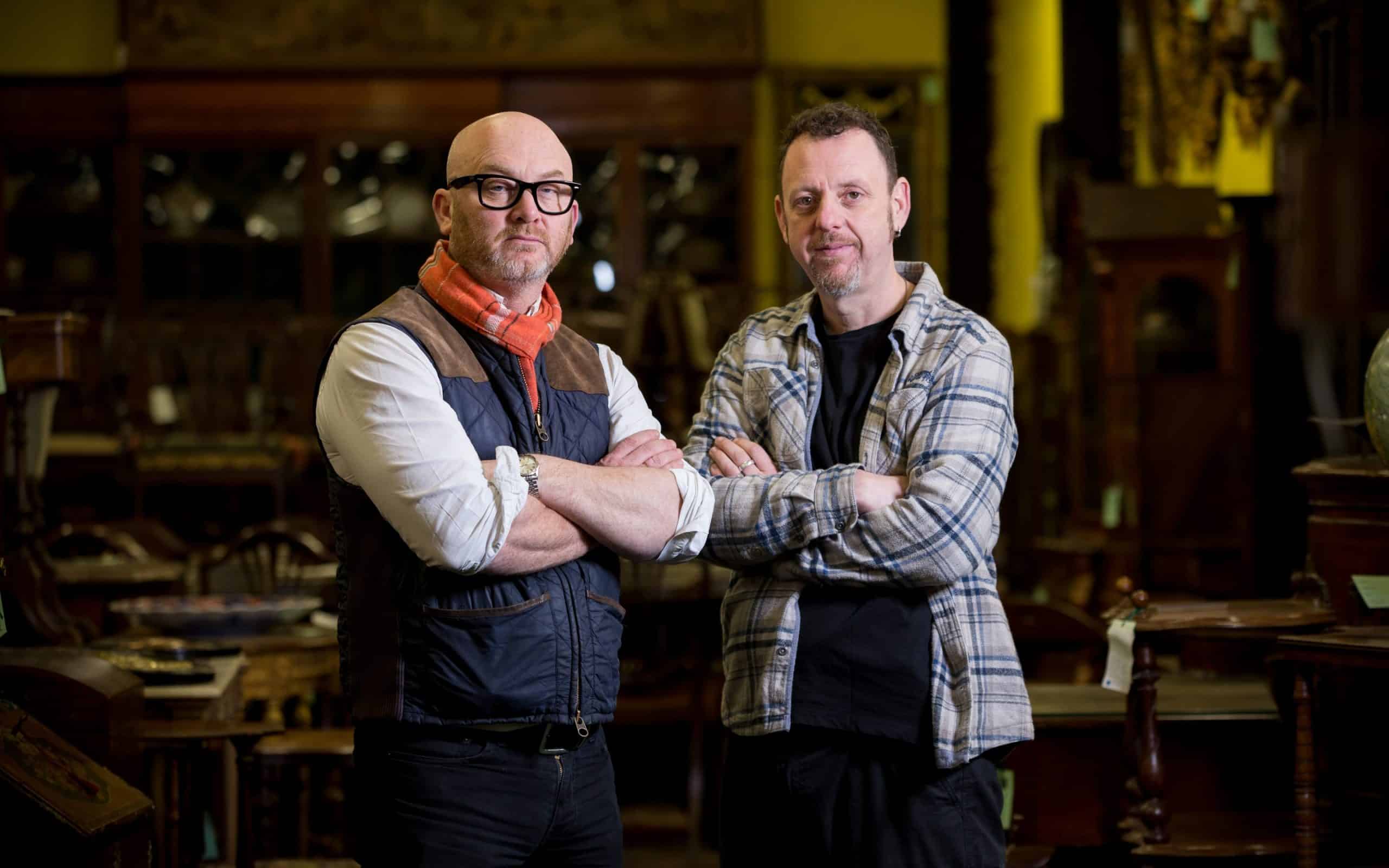
Some items needed only cleaning before they were put on sale, but others were restored or repaired. Not everything he acquired turned out to be gems – there were times when after the item was cleaned up, he discovered it wasn’t really that old or that special. However, he knew how to get his money back, as he would sell them even if his profit was only a dollar.
First episode of “Salvage Hunters”
Business was brisk with hundreds of pieces of merchandise sold over the course of a few weeks, so it was time to stock up. Drew along with Julian, who worked in deliveries and restoration, went to Drumlanrig Castle, the ancestral home of the Duke of Buccleuch, set within a 90,000-acre country estate, one of the biggest in the UK; Drew met with Richard Riley, the head ranger of the estate. Although the place had incredible furniture and great artwork including a Rembrandt painting, what Drew was most interested in could be found outside the castle, as he was looking for some ‘old country house magic.’ Richard took them to the storage area where Drew found and bought a pair of large Georgian plate racks and three hay racks.
The two headed back to their headquarters, where the items would be transformed from ‘junk’ to saleable. For the plate racks, he sold them to another antique dealer. There was a bit of haggling, but he ended up agreeing to the price his customer wanted. Drew said that he loved it when things were sold quickly, sharing that sometimes it wasn’t about the money, as what made it more fun was knowing where it went, especially if it was to a regular customer or someone he respected.
https://www.facebook.com/watch/?v=988309851565099
John Tee in “Salvage Hunters”
John, fondly called by his last name Tee, was introduced as Drew’s sidekick or assistant in the second season premiere of the show, aired in 2012 – he was Drew’s childhood friend. Drew recalled spending summers with Tee, combing the estuary for boat equipment such as oars, which they would sell on the side of the road by his house. He said that this was actually the first time he made money out of things that people discarded.
Not much was known about how their friendship had grown, but Tee shared that he previously worked on and off with Drew, delivering and picking up. In the show, the two went on salvaging trips together, which made Drew’s wife happy, because she knew that if her husband needed cheering up, Tee would be the right person for that. It was clear from the start how much fun the two had, no matter how long they were on the road, partly because of Tee’s sense of humor.
Off to Gilmerton House – His first trip in the show
The two guys went on a five-hour drive from Conwy to the village of Athelstaneford in East Lothian, Scotland, where they met with Sir David Kinloch, 13th Baronet of Gilmerton House, who was also a salvage dealer. Sir David felt that he had pieces worth saving, such as a 19th-century kitchen table made of pine, and hoped it would find a new home because he couldn’t do anything more with it. Drew inspected the table and pointed out what was wrong with it, so that he could buy it at a price that would later give him a tidy profit. There was some damage to the surface, but Drew ended up buying it.
He also got a great deal on a mid-19th-century kitchen prep table, as he already had a potential buyer for it. He didn’t have a hard time purchasing the items, because Sir David was glad that they would be saved and restored. Before they left, they also acquired emergency telephone boxes that came from an old munitions factory, which were a direct link to the fire brigade. Transformed into birdhouses, they could fetch a good price.
Meeting the famous Lancashire salvager
The two went on a two-hour drive to reach Preston, Lancashire, where they met Eddie Whiteside, whod constructed his home out of recycled materials. His yard was a treasure trove for scavengers, as Eddie’s collection spanned more than three decades; he had done restoration work but later decided to leave things as they were. Tee and Drew began their search for something that the latter could sell in his shop, and spotted a cast iron clock that was used to synchronize every clock at a factory, and would be great as a decorative piece in a bar or restaurant. Other items that Drew bought included big concave mirrors used in searchlights by the Royal Navy since the mid-19th century, a pair of mid-century industrial lamps that were larger than average, and well-made white ornate terracotta columns.
Unusual finds
Drew was always on the lookout for lighting fixtures, chairs, signage and clocks, because they sold well. From time to time, however, he would find weird and interesting thing in his scavenger hunts, which he just couldn’t pass the chance to acquire.
Chicken coop and chicken eggs
With Tee driving the van, they went to Oswestry, an historic railway town in Shropshire, close to the Welsh border. They met with Andy Jennings, who was known for preserving pieces of history, and for specializing in upcycling. What caught their attention the most, however, was a late 19th-century chicken coop with cast iron wheels, which Drew said was his favorite purchase that year, saying that it made him giggle. After they modified it back at his shop, it sold pretty quickly. Interestingly, their next find came when they went to the village of Llandinam in Montgomeryshire in central Wales – mid-20th century ceramic chicken eggs or nest eggs, used to encourage a hen to lay more eggs; earlier versions of these were made from wood or glass.
Valvatron
Tee and Drew traveled to Tenbury Wells in Worcestershire to see Adrian Munday, who ran an antique business from the old coach house beside the Georgian manor house on the Burford Estate. They found something quite rare, nothing Drew had ever seen in books, fairs, or salvage yards – a Valvatron, a radio valve advertising an articulated figure from the 1930s with a well-defined face and multicolored wooden body. It was in a good, unrestored condition but was missing a hand.
Tramp art box
The two guys headed to Llangollen, a small town in Denbighshire, Wales, to meet with a young antique dealer. As they entered the shop, Drew’s eyes were immediately drawn to an early 20th-century tramp art box. The woodworking style used was popular between the 1870s and 1940s, in which small pieces of wood from discarded shipping crates or cigar boxes were whittled using a pocket knife into layers of geometric patterns. It was in superb condition, and what made it unusual was that it was painted; it was quickly sold to an American dealer.
Ovaloid decorative bar kegs
A trip to Batemans Brewery in Wainfleet, Lincolnshire proved to be a great one, as Tee and Drew found lots of interesting things in the cellar and storage areas. This wasn’t surprising, considering that the brewery had been founded in 1874, and remained in their family since then. It seemed that nothing had been thrown away, and some items were real collectibles that Drew ended up buying, including an enamel British rail sign, wooden beer crates from the late 1800s, and bronze metal letters made in the 1960s.
However, what excited the expert dealer the most were the ovaloid-shaped bar kegs with their original spigots, and three of them had a painting of a swan on the front. Drew hadn’t seen these late 19th-century ceramic decorative bar kegs before, as they were rare and quite valuable. Unfortunately, the owners had an emotional attachment to them, so Drew didn’t push them into selling the items.
Furniture from the Archduke Franz Ferdinand of Austria
In Haywards Heath, a town in West Sussex said to be named after a highwayman, Tee and Drew found something unexpected. Andrew John Stevenson Clark and his family lived at the Borde Hill Garden, built in Elizabethan times. Drew’s eyes were drawn to an ornate piece of furniture that was a gift to Andrew’s great-great-grandfather by the Archduke Franz Ferdinand of Austria, who was assassinated in Sarajevo and which triggered a series of events leading to World War I; naturally, that particular furniture wasn’t for sale, however, Drew and Tee didn’t go home empty-handed, as they rummaged through the barns and found a child’s twin rocker from the 1930s, which was a cross between a see-saw and a rocking chair, plus a wrought iron table lamp, and wooden library steps made from birch with mahogany trim.
There was a sense of authenticity to how Tee and Drew scoured junkyards and country estates. What made the show quite fascinating was that one never knew what the two would find. The salvage dealer said that sometimes ‘gems’ were regarded as junk when they became unwanted or were handed over to someone who didn’t understand their value; only when it was discovered by someone who knew its worth that it would become valuable again. Often, just when viewers thought their trip was a bust, they would end up bringing back rare treasures.
Drew acquired a reputation for sourcing weird and unique items, so it wasn’t surprising that the show became a huge hit, and spawned several spin-off series including “Salvage Hunters: Best Buys,” “Salvage Hunters: Classic Cars,” “Salvage Hunters: Bitesize,” and “Salvage Hunters: Best Restorations.”
What happened to John Tee?
Tee kept a low profile whenever he and Drew were on a scavenging hunt – as the latter talked business with owners and other dealers – but was ready to help when needed. When they were on the road, however, he was back to his old self, making his friend laugh. Not much was known about him, as he never really talked about his personal life.
https://www.instagram.com/p/CnjkSKSIqZ-/
Fans who had been watching “Salvage Hunters” noticed that Tee had a bit of a weight problem, and were amazed by his weight loss transformation over the years, however, it seemed that he recently regained the weight. Another thing that viewers noticed from the latest season of the show, as well as from photos posted on Instagram said to be managed by the production team, was that he was sporting a beard. His fans were quick to comment that he looked like Hagrid, the half-giant wizard from the “Harry Potter” movies.
Tee was still part of the Quest reality show as it aired its 16th season in 2022. It appeared that the series remained in strong demand despite the scandal involving its main star. Apparently, in 2015, Drew had an extra-marital affair with Amanda, a married woman, and he was punched in the head by her husband, Janus Thomas, just outside the Liverpool Arms pub in 2017. The businessman believed he was provoked by Drew, who smirked at him and so he felt belittled. As for Drew, he and his wife divorced in 2017, allegedly because of his infidelity, but Rebecca remained his business partner.
It was reported that the Drew Pritchard Antique store, which he opened in 2017 on Conwy High Street, closed down in 2022, Drew saying that he would relocate to ‘new pastures.’ Those who are interested in getting their hands on his best finds may continue to do so through his online store. Meanwhile, fans just have to watch old episodes, or wait for the next season of the show to air to see John Tee.

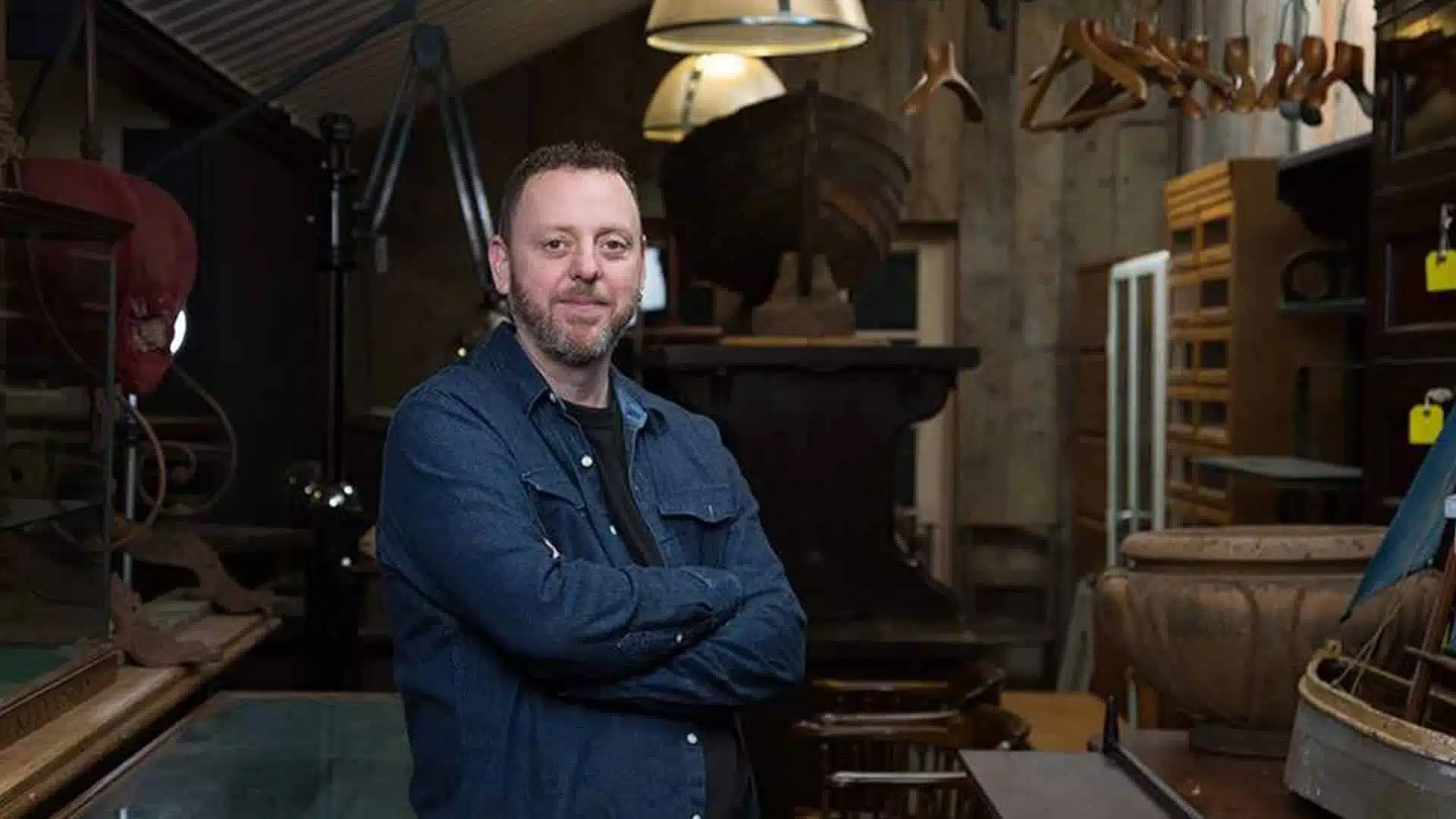


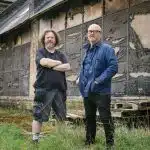
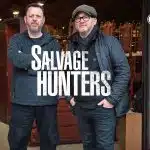



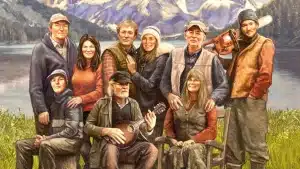

Leave a Comment